Here’s a look at what you see if you go to the Three Rondawels viewpoint above the Blyde River Nature Reserve in northern South Africa:
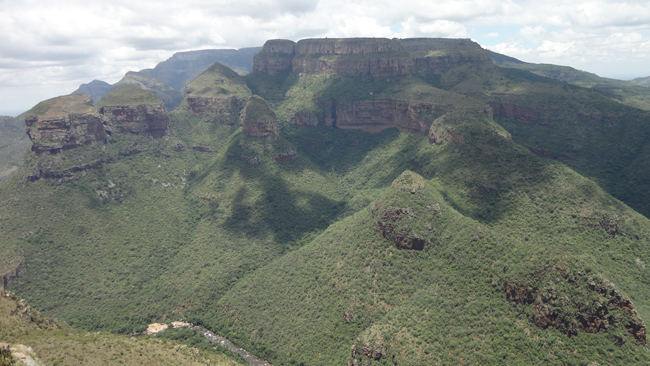
A lovely scene. The three mega-hoodoos on the left are the eponymous “rondawels” (pronounced ron-da-vulz), which is the Afrikaans word for a round hut. These erosional remnants are more or less cylindrical and of the same dimensional ratio as the huts, so this name seems moderately apt. However, something besides the scenery caught my eye…
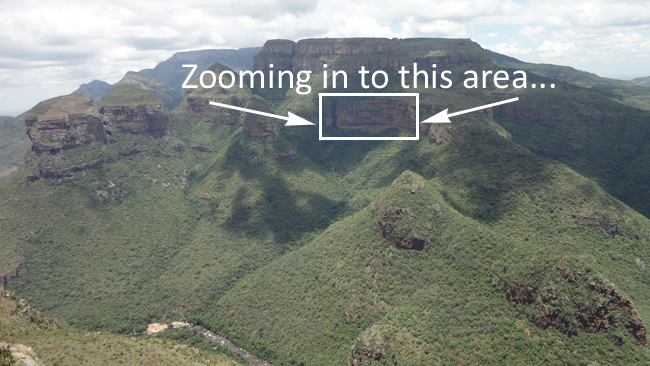
If you zoom in to that quartzite cliff-face opposite, you’ll see this:
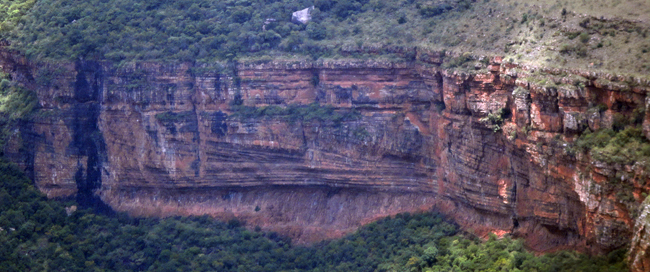
That looks to me like an ancient delta’s progradational sequence: the horizontal deeper-water bottomset beds overlain by the foreset beds, gently sloping at the subaqueous angle of repose off to the right (indicating the direction the delta built out towards), and finally topped off by the horizontal shallow-water topset beds. What do you think?
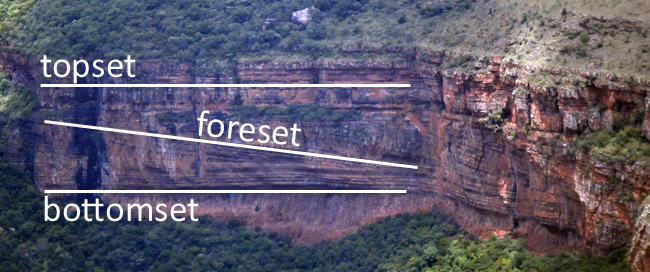
Recall that this is the typical form the internal anatomy of a delta takes on:
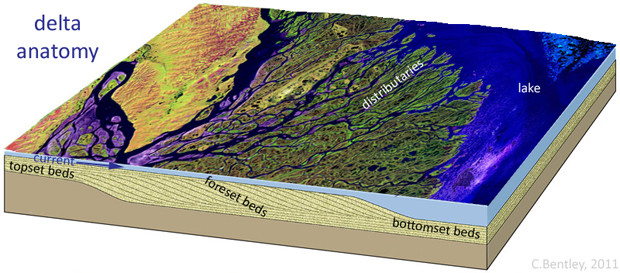
The strata here are of the Wolkberg Group, a Paleoproterozoic sedimentary sequence. If I’m right about the delta interpretation, then the source of the sediments (upstream for the river feeding the delta) was to the northeast. Nowadays, you can’t go too far to the northeast before you run out of African continent. I’m not sure what the continental configurations were like in the Paleoproterozoic, but I wonder at the source of this sediment. The quartzite composition implies that it would have had plenty of time to mature before deposition, and that implies a mighty long river system, which implies a distant source for the sediment. Where did this sand start off? What mountains shed it into that putative ancient long river? Which continent would this sand call “home”?
These are the questions that go through my mind when looking out at the same scene that the tourist next to me might simply call ‘pretty’… It’s a weird thing to look at the world through geology-colored glasses.

Sweet. Sure looks like clinoforms to me. If not deltaic, then a large lateral accretion package.
Speaking as a geology fan who has much to learn, I really enjoyed the look through your glasses.
By the way, this relatively new paper might make you draw your diagram differently: http://geology.geoscienceworld.org/content/39/12/1175.abstract
That’s a very cool exposure, all right. It would be interesting to see the grain size distribution of those various beds. Presumably if your prograding delta interpretation was correct, the bottomset beds would be finest and the topsets would be coarsest. However, I’m not volunteering to go and take samples from that heart-stopping outcrop!
To play devil’s advocate (and aided by my complete ignorance of the local geology), re: your idea of a long river system being needed to transport & deposit those “mature” quartz sands. One alternate possibility is that the sand could have been reworked from a much more local source (say, an older, uplifted shoreface or delta deposit, an aeolian dune complex, etc.). If quartz sandstone was all the river had to work with in its drainage basin, you wouldn’t necessarily need a long distance to develop a quartz-dominated delta deposit.
Good thinking! My own ignorance of such a local source will I think stop our speculation there, though.
“It’s a weird thing to look at the world through geology-colored glasses.”
Rather than weird, I’d say it’s thrilling. The ability to look beyond the visible modern landscape and peer back into the ancient Earth makes me feel an even deeper connection with the natural world we share.
Time travel is not a thing of the future, it is extant today in the minds and hearts of geologists, professional and ameteur alike.
Thank you for sharing this.